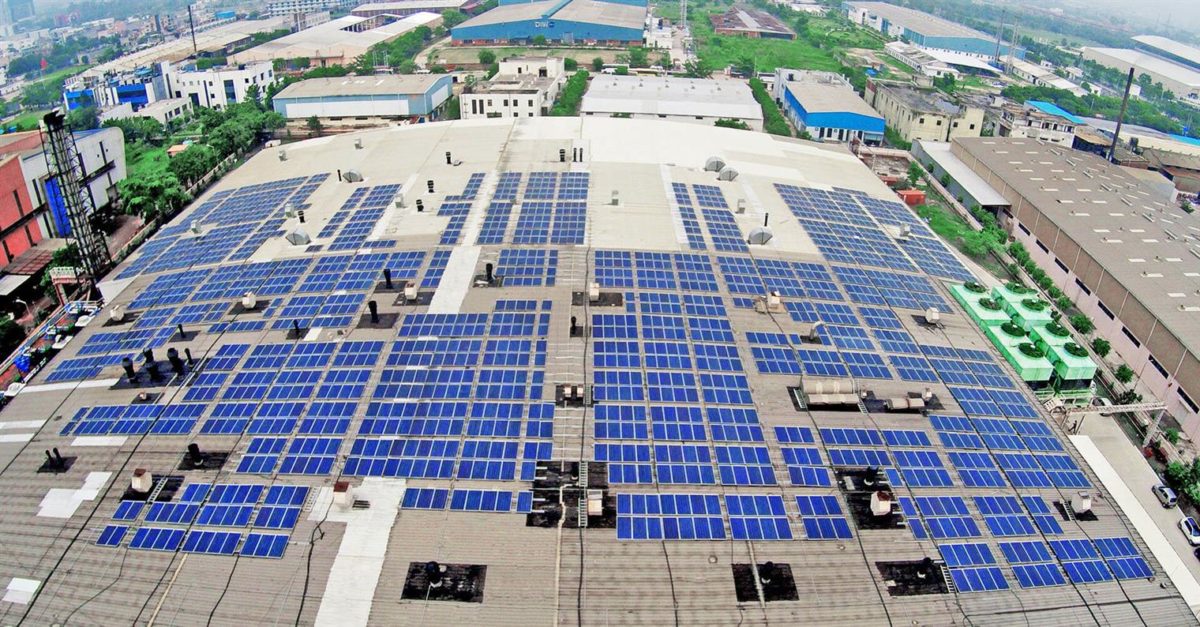A net feed-in tariff scheme could be a potential solution for India’s rooftop solar industry, which is grappling with the introduction of a new regulation that will exclude larger rooftop systems from net metering.
In December 2020, the Ministry of Power issued the “Electricity (Rights of Consumers) Rules, 2020”, setting out the rights of electricity consumers in India. Under the “Consumer as Prosumer” section, the new enactment mandates net metering for loads up to 10 kilowatts (kW) and gross metering for loads above 10 kW.
While this central government notification is not legally valid unless the state governments implement it, many states are reluctant to allow net metering for corporate consumers and are likely to shift them to gross metering.
A few states have already started to implement the new regulation in different forms. West Bengal has issued amendments that allow net metering for consumers with sanctioned loads of up to 5kW and gross metering for contract demand above 5 kW. Karnataka has also proposed a gross metering arrangement for rooftop solar projects over 10kW capacity at an INR 2.84/kWh tariff.
Even though the gross metering arrangement has existed for many years, it has found few takers due to issues related to the distribution companies (discoms), such as inconsistency in payments, the administrative processes, and unattractive feed-in tariffs. But with net metering limited to rooftop solar systems up to 10kW, consumer categories – barring small- to medium-sized households – will be left with an economically unattractive gross metering arrangement.
Our analysis of various net metering and gross metering tariffs payable across leading states found gross-metered consumers are compensated for the export of solar power to the grid at rates of INR 2-4/kWh. However, current rooftop power purchase agreements (PPAs) signed by Tier 1 developers have tariffs in the range of INR 3.5-4/kWh.
Developers and corporates would consider any tariff lower than the current PPA tariff unviable. And not only would corporates be reluctant to set up a rooftop solar system for just INR 2-2.5/kWh benefit, under gross metering they would not benefit commercially from using the power generated from their own system for self-consumption.
The restrictions on net metering aim to tackle the growing concerns of loss-making discoms which could lose revenues from high-paying commercial and industrial (C&I) consumers who shift to rooftop solar.
Notably, if India were to achieve its national rooftop solar target of 40 gigawatts (GW) by 2022, this would only contribute to about 3-4% of the country’s entire energy generation. This figure represents a minuscule share of discoms’ revenue, and at just 6-7GW presently, the rooftop solar market poses little threat to the discoms, while offering a significant opportunity to enhance distributed generation and help fund national electricity system demand growth.
What are the solutions?
The interests of all stakeholders, including consumers, developers and discoms, should be given equal weight whilst also stimulating private investment in new low cost, zero emissions distributed capacity. Potential solutions such as imposition of banking charges, a net feed-in tariff and peer-to-peer energy trading should be explored, with a balanced approach meeting different stakeholders’ interests in providing the serviceability of the rooftop solar system.
Some potential solutions that offer a middle ground for the concerned stakeholders cover the following broad approaches: unrestricting net metering albeit at a pre-fixed cost to the consumer; altering the calculation basis for prosumer compensation rates other than the prevailing net metering and gross metering models; and augmenting the energy and monetary exchange channels of the market.
More specifically, a net feed-in mechanism may prove to be a highly plausible solution. A net-feed-in mechanism is similar to net metering except when it comes to tariff calculation. Under this arrangement, for every unit of rooftop solar power used for self-consumption, the consumer would be credited at a price equivalent to the retail supply tariff charged by the discom. Meanwhile, the surplus energy exported to the grid is compensated at a net feed-in tariff determined by the relevant State Electricity Regulatory Commission (SERC).
To illustrate the impact of different models on discoms and end consumers, assume a consumer with an energy demand of 100kWh generates 30kWh from their solar rooftop plant, out of which 20kWh is self-consumed and the balance of 10kWh is exported to the grid. The retail tariff for the consumer is INR 7/kWh and the feed-in-tariff is INR 3/kWh.
The net feed-in option could offer a solution that meets the interests of all the stakeholders, without having any major negative impact on discoms’ revenue and would still be beneficial for the end consumer compared to net metering and gross metering.
The views and opinions expressed in this article are the author’s own, and do not necessarily reflect those held by pv magazine.
This content is protected by copyright and may not be reused. If you want to cooperate with us and would like to reuse some of our content, please contact: editors@pv-magazine.com.








Even in Rajasthan there is a draft regulation that limits Net-Metering to 10 KWp. This will be disastrous for rooftop solar power in commercial and industrial space.